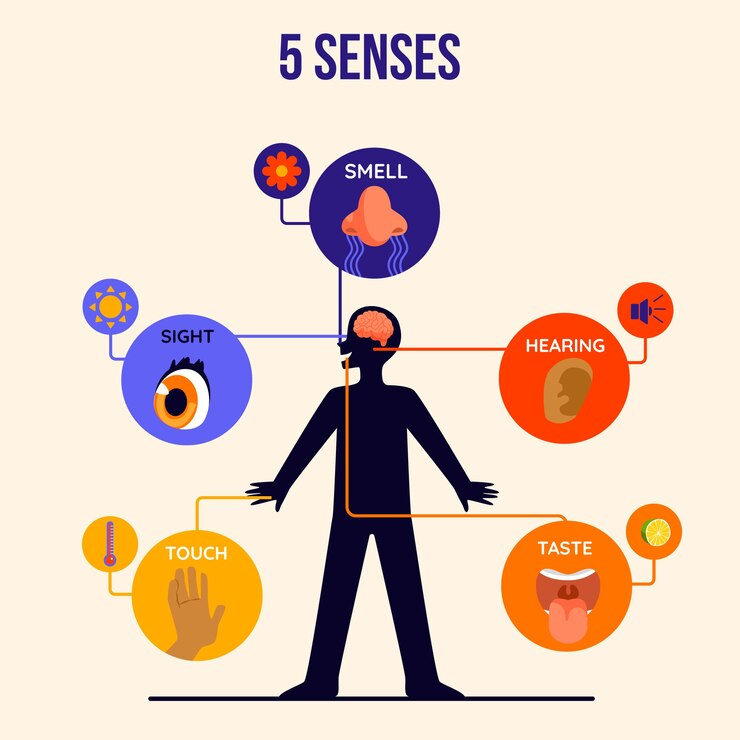Answer – There are five basic human senses: touch, sight, hearing, smell, and taste.
Explanation:
Traditionally, humans are known to have five senses.
- Sense of sight: Sight, or vision, is a crucial sense that allows humans to detect light, color, and distance, enabling them to navigate their environment effectively. The eyes receive light reflected off objects, with the cornea and lens focusing this light onto the retina. The retina then converts light into electrical signals that are transmitted to the brain via the optic nerve for interpretation. The brain processes these signals to form visual images, helping individuals perceive their surroundings, identify objects, and recognize faces.
- Sense of hearing: Hearing is the ability to sense sound waves and vibrations, providing essential information about the environment. Sound waves enter the ear, causing vibrations in the eardrum, which are then transmitted through the auditory system to the brain for processing. The brain interprets these signals to recognize sounds, understand speech, and maintain spatial awareness. Hearing plays a crucial role in communication, safety, and overall sensory experience.
- Sense of taste: Taste, a chemical sense, allows humans to detect flavors through taste buds on the tongue. Taste receptors distinguish between four primary tastes: sweet, salty, sour, and bitter. When food or drink enters the mouth, taste buds send signals to the brain, which interprets these signals to create the sensation of taste. Taste helps individuals evaluate food quality, detect potential dangers like spoiled food, and derive pleasure from eating.
- Sense of smell: Smell, also known as olfaction, is a chemical sense that enables humans to perceive a wide range of smells and odors. Olfactory receptors in the nose detect airborne molecules, sending signals to the brain for interpretation. The brain processes these signals to identify scents, trigger memories, and influence taste perception. Smell plays a vital role in detecting hazards, enjoying food, and evoking emotional responses.
- Sense of touch: Touch is a complex sense that involves various sensations like pressure, temperature, pain, and texture, transmitted through specialized neurons in the skin. Nerve endings throughout the body send signals to the brain, allowing individuals to perceive physical stimuli, differentiate between textures, and experience sensations like warmth or pain. Touch is essential for interacting with the environment, feeling empathy, and ensuring safety and well-being.
However, the traditional concept of the five senses is an oversimplification. Recent research suggests the human sensory system may be more complex, with some studies indicating a potential range of approximately 22 to 33 distinct senses. Proprioception is one additional sense that involves a sensory mechanism responsible for the brain’s comprehension of the body’s spatial orientation. It encompasses the perception of limb and muscle movement and positioning. Electroreception, magnetoreception, balance, nociception, and interoception are also additional senses. These senses play unique roles in detecting electrical fields, and magnetic fields, maintaining equilibrium, sensing pain, and perceiving internal bodily functions, respectively.
